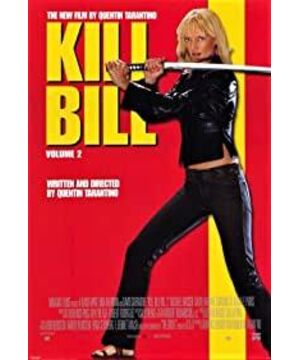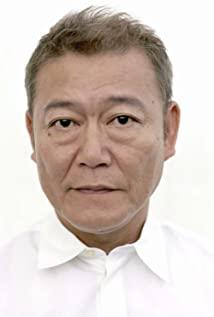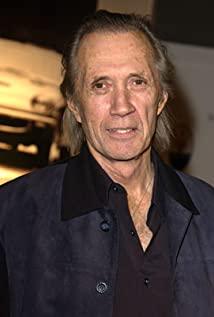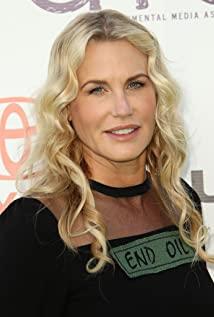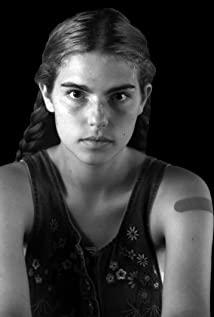If I have to summarize the plot and structure of "Kill Bill II", the only sentence I can think of is: lack of sincerity and satisfactory.
It is difficult to avoid a problem with many sequel films, that is, they are easy to confuse with the remaining themes of the previous work, the old tune is repeated, and there is a lack of innovation and progress.
The "Kill Bill" series did not stumble in this common trap, but it was inevitably interfered and impacted by some other cultures, and lacked a relatively accurate definition of the film's own ideology.
In the film "The Bourgge" series, the first part mainly talks about the process of finding memory and the past after the male protagonist loses his memory. Most of this part describes the "present tense", while in the second part, The focus has been shifted to the conflicts caused by past memories. And this one mainly begins to describe stories discovered in the past.
The plasticity of the movie is very high, the characters are three-dimensional, and its own historical background, childhood memories, family background, education, work experience and social group can all be used as an angle of story extension, or a kind of thinking and a task.
Similarly, in the film "Kill Bill II", the big frame of the film was constructed in the same way.
text
The story begins with a flashback to the Marriage Church in Shuangsong Town, that is, a very detailed introduction and reinterpretation of the "historical background" mentioned in the first part. One advantage of this is that it allows the audience to There is a complete review of the historical background mentioned in the first part, and the second is to make a relatively complete summary of the entire incident, so as to pave the way for the subsequent "chase".
Movies are a kind of mixed art, and every movie will form a movie genre in some form. No film exists independently of film genre or literary movement. In the last few decades, more and more films have begun to take the form of "mixed genres". This form can be said to be equivalent to a kind of innovation in disguise, and it is also a new thinking about an old thing. .
For example, in the movie "Kill Bill II", after the heroine bride was caught by Bill's younger brother, Bill's personal guard Bud, and was thrown into the coffin to wait for death, the movie inserted a flashback, and it was the woman. This experience of the Lord saved herself.
This memory in the film actually plays the same role as the samurai sword in the first film. It reinterprets the heroine’s experience to resolve the dramatic conflict that the heroine currently encounters (being locked up). Can't move in the coffin, can only wait to die).
Friends who are familiar with this plot may know that when the film shows the emotional changes of the long eyebrows, it is all done through rapid lens stretching. This is actually a kind of tribute to Hong Kong-style kung fu movies in disguise. behavior.
The most classic Hong Kong-style kungfu film is the innovation of the lens language. It can be said that this is a very successful attempt and it has almost become a Hong Kong-style kungfu film. A kind of copyright sign.
If it has to correspond to the clip in the first part, the experience of the heroine and Daochang Baimei’s practice actually corresponds to the childhood of the Japanese killer "Oren" that appeared in the movie "Kill Bill I" Both of the recalled animation clips are expressed in images by exploring the theme of the influence of the past on the current character. The difference is that the former describes "a person's battle", while the latter describes "the father and the "Female" confrontation, why do you say that?
In the process of the heroine and the white eyebrows in learning martial arts, it actually corresponds to the wisdom of the old archetype in Karl Jung's conclusion that the " role archetype " is : it represents the hero's need to integrate the father's role or the wise man.
At the same time, this integration process is also a process that the heroine (female hero archetype) must go through to become a wise elder.
Therefore, in the end, the female protagonist broke the coffin board through the "inch punch" learned from the head of the white eyebrows, and gained a new life.
This should be the most concise and clear plot of causality expressed in the film, and it also allows the audience to understand at a glance (the audience can make a subjective connection between the past character’s experience and the current environment. The relatively simple mind map also explains the plot.)
However, because this episode of the white-browed Taoist involves the use of audiovisual language and ideology in Hong Kong-style kung fu films, the overall ideology of the film has begun to develop in a vague direction, because the gap between the types is too large, and the two shots The combination of languages does not blend well together, and it also caused the audience's subjective rejection of the "tribute to the bridge" shown in the film, which made the audience questionable.
How to accurately define the spread of ideology in the film is very important in the audiovisual language of the film. This means that the audience will no longer question the way the film is presented, but will become more unconsciously immersed in the film. Only such movie ideas can be effectively spread.
For example, in the movie "Kill Bill I", although the gap between the animation clips and the live-action movie is still very large, because this is a combination of two kinds of art, it will not be understood and immersed in the plot. Too much interference.
And although another artistic carrier is used to introduce personal stories, his own ideology is still Quentin’s personal. He is a way of showing violent aesthetics that abstracts real people, so his theme is still in Kunming. Ting’s grasp.
In the duel between the heroine and the killer Ai Er, how the film shots are handled in the above two pictures, how does the movie show the emotional changes of the characters?
Unlike Hong Kong-style action movies, this psychological montage segment is expressed through the slow stretching of the lens, and the stretching of the lens can be described as follows: Panorama (Ayer)-Panorama (Beatrix)-Medium Scenery (Ayer)——Middle shot (Beatrix)——Close shot (Ayer)——Close shot (Beatrix)——Face close-up (Ayer)——Face close-up (Beatrix)—— Partial Specialty (El)-Partial Specialty (Beatrix).
In the process of the film, in addition to omitting the two shots of the middle shot, the others are displayed in front of the audience. Through the continuous approach of the shots, the confrontation and conflict between the characters and the characters are shown, and this conflict has reached the eye The development of the close-up to the maximum is the point of no return in the film we often mention. The characters must make some actions to complete the conflict or resolve the conflict, otherwise they will fall into a vicious circle of confrontation.
In this film, Beatrice (we already know that the heroine’s name is Beatrice) cuts out one of El’s remaining eyes and uses such extreme actions to resolve the previously established dramatic conflict. Since then, all four killers have died, leaving only the biggest boss-BILL.
But after killing Bill and severing her past debts, Beatrice hid in the bathroom crying. Why?
One thing is certain is that this is about "love". Bill is not only Beatrice's spiritual and life father, but also her lover.
Before that, the heroine Beatrice was actually a very flat character: cold-blooded, violent, revenge, and rational. After the ending, the heroine has become a three-dimensional character. The most vivid display is that the heroine has become The process of motherhood. This process means the combination of the heroine and the essence of maternity, but also the recombination with the female body, female feelings, female passion and emotion (referenced from Joseph Campbell's "Hero with a Thousand Faces")
Therefore, in the last shot, the scene of Beatrice and her daughter sitting together is actually showing such a theme.
But there is a flaw: this way of expression destroys the legendary color created in the first half of the film, and compulsorily adds "peace" and "warm" elements to the film, making the overall structure of the film fragmented, and it cannot Said to be the result of a complete thinking.
If the early stage can deepen the implantation of the concept of ending, then the creation of the atmosphere of the ending may be better.
At this point, the analysis of the two parts of "Kill Bill" is complete. We can see that this is a very unique and tricky movie. Quentin has great ambitions, especially in the process of visualizing the story. many problems.
But this is still a very exciting movie, which provides a different image structure and form from the past, which in itself is an act worthy of tribute.
Before the test strip turns blue, I can jump from the motorcycle to the speeding train, for you. But after the test strip turned blue, I was no longer the me I used to be, not anymore. Because I am going to be a mother, can you understand?
View more about Kill Bill: Vol. 2 reviews


